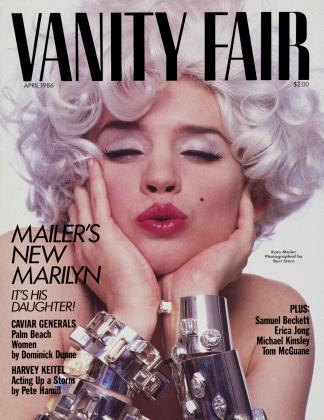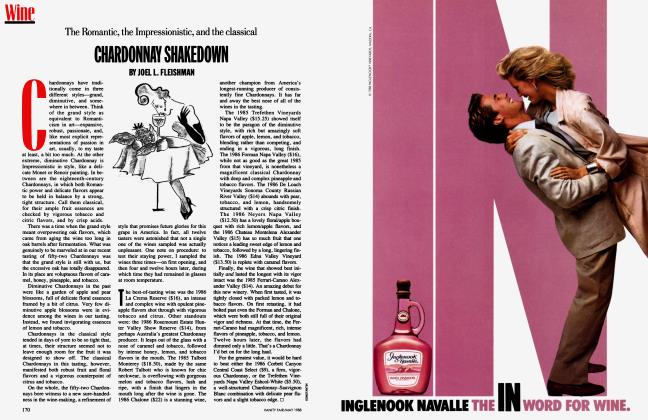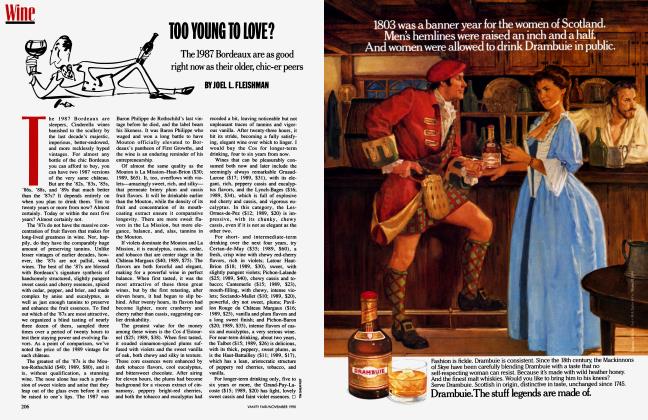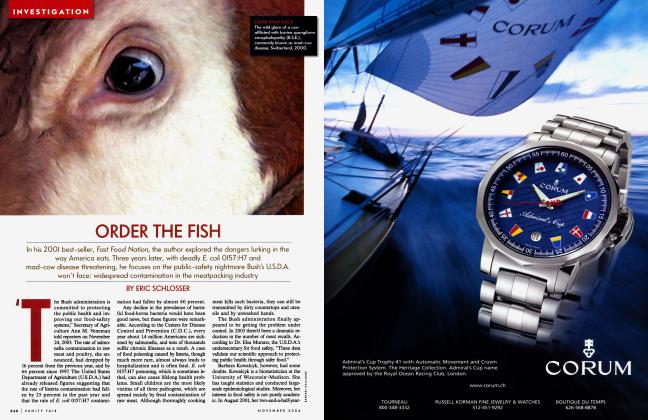Sign In to Your Account
Subscribers have complete access to the archive.
Sign In Not a Subscriber?Join NowWhen a restaurant wine steward inquires, usually condescendingly, “Shall I pour the wine or would you prefer to let it breathe for a while?’’ one can reasonably wonder at the stupidity of the question. How would he prevent the wine from breathing once it is poured? He could not perform that miracle of suffocation short of sticking Saran Wrap tightly over the top of your glass, for it is obvious that more oxygen can mix with wine both in the pouring and when the wine rests in the glass than if it remains in the bottle.
The only valid reason for not tilting the bottle immediately upon uncorking is to prevent the wine from being tasted and consumed, and since you and your guests presumably are civilized and self-restrained drinkers, you will not quaff all the wine at once. You will discipline yourselves to enjoy successive sips separated by discrete periods of time, savoring the evolution of the wine as it matures in the glass.
When wine oxygenates in the glass, one can experience its spectrum of flavors and components of taste from beginning to end. Moreover, the first bouquet released on contact with the air is frequently the most intense, especially in older wines, and one misses it entirely by not pouring immediately. But the choice need not be simply between slow breathing in the bottle and rapid oxygenation in the glass. One can choose to decant from the bottle into another container, preferably made of
crystal or glass, which will not impart any unwanted tastes to the wine. As the wine is exposed in the decanter, the evolution of its flavors accelerates rapidly. Off-odors evaporate in the presence of fresh air, and the entire bottle of wine can be speeded along toward its several peaks of flavor. Of course, wine poured into a glass evolves in exactly the same fashion. The difference is that only the wine in the glass does so, not that remaining in the bottle.
Another reason for decanting is to show off the wine at its moment of greatest glory, which requires both an intimate prior knowledge of the particular bottle and the autocracy of a Prussian general in moving one’s troops to the table at precisely that moment. There’s not much danger in decanting young wines; they will be slow to fade away. But if one miscalculates the vigor of an older wine and decants too long in advance of tasting, it will be not only the bouquet which one loses but the wine itself. It is impossible for all but practiced wine buffs to comprehend how quickly older, fragile wines can go completely to pieces.
The circumstance which absolutely mandates decanting is the presence of sediment in the bottle. This usually occurs only in older wines. By careful decanting over a candle or against a background of any bright, focused light that is strong enough to illuminate the flow of wine from one container to the other, the sediment can be left in the bottle. Of course, wine can be poured directly into glasses from bottles with sediment; to do so, however, means repeating the cautious, tentative illuminated scrutiny every time a glass is filled.
Decanters come in all shapes and sizes, and make inexpensive, welcome gifts to wine lovers, who never seem to have enough of them. The best vessels for wine decanting are not fancy but simple. Any container will do, although narrow-mouthed ones are more suitable for storing beverages than for decanting purposes. It is virtually impossible to pour wine into them without a funnel. And once the wine is poured, only the daintiest of noses can get inside the neck for a good sniff of the bouquet.
I decant wines older than ten years, but rarely more than fifteen to thirty minutes before serving, unless I know the wine intimately. If I am serving younger reds, I will decant them about an hour before they are to be drunk, especially if I know or suspect them to be overly tannic or to have backward flavors. As a general matter, however, even when a decanter is readily available, I let my wine do its breathing in the glass. One of the greatest of wine’s many wonders is the way each bottle evolves. Watching a wine unfold from its first contact with air until it has, to borrow from Thomas Wolfe, burgeoned out all that is within it is like watching the sky go step-by-step from the blackness of night through the dawn to the glory of a full sunrise.
Breathing in the glass has an additional advantage, especially if one is comparing several wines. Not long ago at a dinner with friends, I poured two recent California Cabernet Sauvignons—the 1982 and 1983 Whitehall Lane. Because the latter is a more forward wine, it was nearly everyone’s favorite on pouring. As the two wines breathed in the glass, the 1982 began to open up, growing deeper, richer, lovelier, more minty, and more intense. By the end of the dinner, it was the hands-down favorite of everyone. Had I uncorked or decanted the wine long beforehand, that experience of wine evolving would not have been part of the evening. Perhaps it is a matter of personal taste, but I’d much rather savor a succession of ever changing flavors than be confined within the monotony of perfection itself. And that would be true even if I were confident of my ability to recognize perfection in the absence of comparison, and even if I were certain that I could produce it on every occasion.
 View Full Issue
View Full Issue


















Subscribers have complete access to the archive.
Sign In Not a Subscriber?Join Now